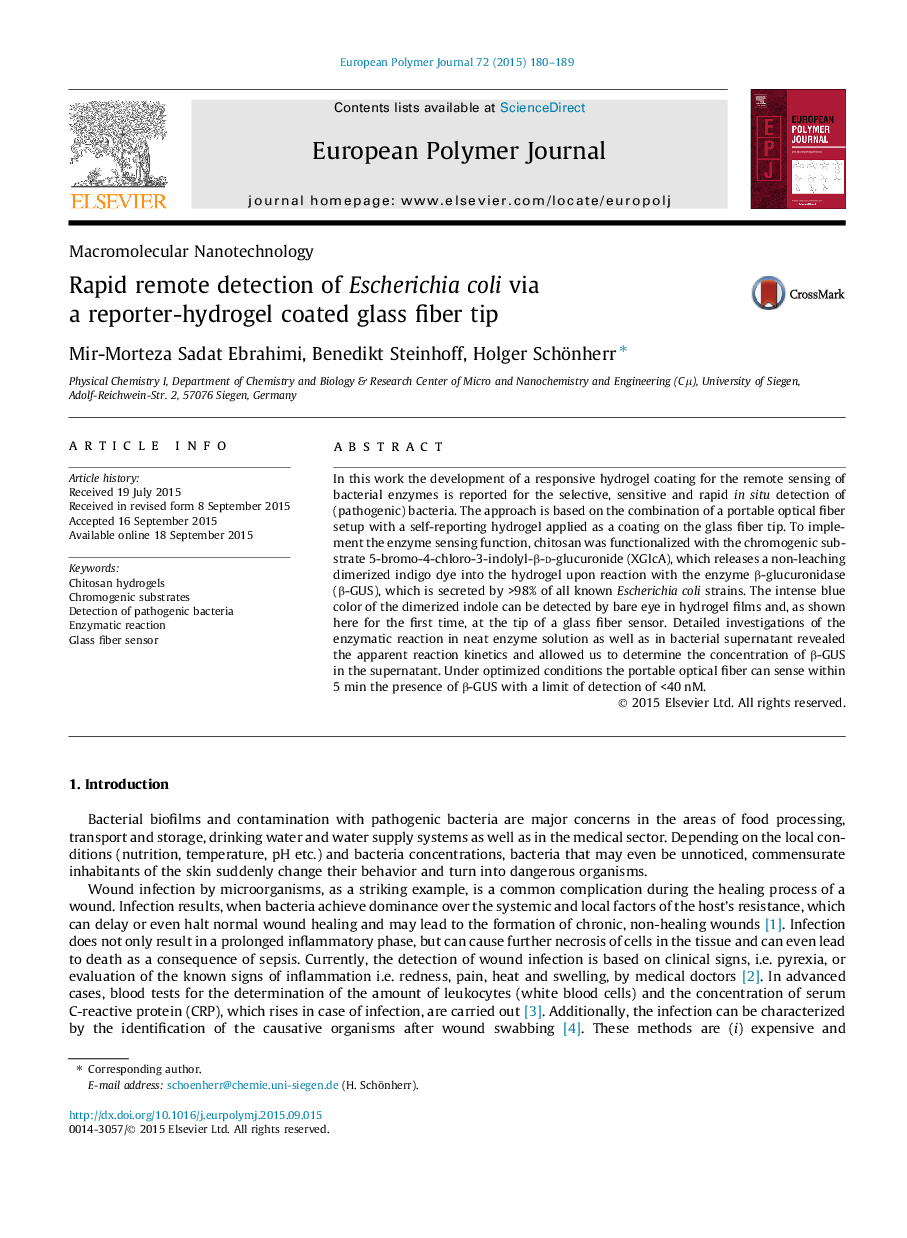| Article ID | Journal | Published Year | Pages | File Type |
|---|---|---|---|---|
| 1394712 | European Polymer Journal | 2015 | 10 Pages |
•Rapid glass fiber-based sensing of bacterial enzyme β-glucuronidase is shown.•Chitosan with conjugated chromogenic substrate affords a LOD.•The reporter dye does not leach out of the chitosan hydrogel.•Direct determination of bacterial enzyme concentration in supernatant is feasible.•The detection of β-GUS is also possible directly in bacterial suspensions.
In this work the development of a responsive hydrogel coating for the remote sensing of bacterial enzymes is reported for the selective, sensitive and rapid in situ detection of (pathogenic) bacteria. The approach is based on the combination of a portable optical fiber setup with a self-reporting hydrogel applied as a coating on the glass fiber tip. To implement the enzyme sensing function, chitosan was functionalized with the chromogenic substrate 5-bromo-4-chloro-3-indolyl-β-d-glucuronide (XGlcA), which releases a non-leaching dimerized indigo dye into the hydrogel upon reaction with the enzyme β-glucuronidase (β-GUS), which is secreted by >98% of all known Escherichia coli strains. The intense blue color of the dimerized indole can be detected by bare eye in hydrogel films and, as shown here for the first time, at the tip of a glass fiber sensor. Detailed investigations of the enzymatic reaction in neat enzyme solution as well as in bacterial supernatant revealed the apparent reaction kinetics and allowed us to determine the concentration of β-GUS in the supernatant. Under optimized conditions the portable optical fiber can sense within 5 min the presence of β-GUS with a limit of detection of <40 nM.
Graphical abstractFigure optionsDownload full-size imageDownload as PowerPoint slide
